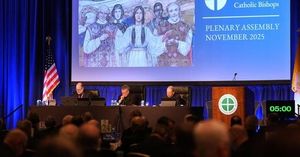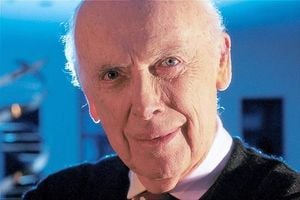Last week, a new undergraduate course titled "Dissent and Democracy in the World" kicked off at a leading American university, aiming to spark conversation about a topic that feels more urgent than ever: the right to speak one’s mind, especially when it runs counter to prevailing views. The course’s creator, Elizabeth Shackelford, a former U.S. diplomat and foreign affairs columnist, reflected in the Chicago Tribune on how the landscape of free speech in America has shifted dramatically in recent times. What once seemed a given—the ability to voice dissent without fear of government reprisal—now feels increasingly fragile.
Shackelford’s timing couldn’t have been more prescient. In the days surrounding the course’s launch, officials in the Donald Trump administration issued what many interpreted as direct threats against free speech and dissent. According to the Chicago Tribune, Vice President JD Vance urged citizens to monitor their peers and report "unpalatable opinions" to employers, an exhortation that conjured images of surveillance and self-censorship more reminiscent of authoritarian regimes than American democracy. Meanwhile, White House deputy chief of staff Stephen Miller, as reported by the same outlet, labeled left-wing political organizations as "terrorist groups" and vowed to use law enforcement to "take away your money, take away your power, and if you’ve broken the law, take away your freedom."
These proclamations did not go unnoticed. The Detroit News highlighted the slippery slope of criminalizing speech, especially so-called "hate speech." The article pointed out that what constitutes hate is often subjective—"in the eye of the beholder"—and that attempts to legislate it risk eroding the very foundation of free expression. The piece recounted how Republican Attorney General Pam Bondi threatened to prosecute businesses that discriminate, referencing a case in Portage, Michigan, where an Office Depot worker refused to print a poster supporting a rally for slain conservative activist Charlie Kirk. Bondi declared, "There’s free speech and then there’s hate speech… We will absolutely target you, go after you, if you are targeting anyone with hate speech." Yet, as the article noted, Bondi offered no clear definition of what constitutes hate speech, raising the specter of arbitrary enforcement.
President Trump himself weighed in on the controversy, suggesting that the media’s critical coverage of his administration might qualify as hate speech. Responding to ABC’s Jonathan Karl, Trump remarked, "We’ll probably go after people like you because you treat me so unfairly, it’s hate. You have a lot of hate in your heart." This comment, according to The Detroit News, underscored the dangers of giving politicians the power to decide which speech is permissible and which is not. "Hate speech laws would inevitably be used by politicians to silence their opponents and stifle criticism of their policies," the article warned.
The week saw other high-profile figures join the fray. Vice President Vance and Stephen Miller promised to unleash the Departments of Justice and Homeland Security on "left-wing lunatics," as reported by The Detroit News. Representative Nancy Mace of South Carolina penned a letter to Education Secretary Linda McMahon, urging her to defund school districts and universities that fail to fire teachers and professors who celebrated Kirk’s assassination. The message was clear: dissenting views, particularly those perceived as hostile to the administration’s agenda, would be met with severe consequences.
These developments have reignited debate about the meaning and limits of free speech in America. Shackelford, in her Chicago Tribune column, lamented that the threats from government officials were so vague and the power so extensive that "this will undoubtedly drive widespread self-censorship and suppress free expression across many communities out of fear." She warned that "one need not eradicate all dissent to be effective. Punishing a few will quiet many." The chilling effect, she argued, is already visible, with corporations preemptively suppressing speech to avoid government scrutiny—"canceling comedians the president has lambasted is only a start."
But what exactly is lost when dissent is stifled? Shackelford pointed to history’s cautionary tales: the collapse of Enron in 2001, the Challenger space shuttle disaster in 1986, and the Bay of Pigs invasion in 1961. In each case, the absence of dissent—whether due to social pressure, fear, or groupthink—led to catastrophic outcomes. "The absence of dissent was the danger," she wrote, emphasizing that communities and organizations benefit not only when dissent is tolerated, but when it is actively encouraged. "Even if a dissenting perspective isn’t correct or better, dissent brings different views to the fore so that they can be debated, and that improves and sharpens arguments, options and outcomes."
Yet, as both the Chicago Tribune and Detroit News noted, the First Amendment’s protections are not absolute. There is a narrow range of speech that is not legally protected, such as incitement to imminent lawless action. But the current climate, they argued, goes well beyond these established boundaries. The risk, Shackelford contended, is that "when an authority is actively suppressing or punishing speech itself, the space open to debate gets much smaller very quickly. That harms outcomes and raises risks. And that is where our country is heading today."
The debate over hate speech bans and free expression is hardly new, but the stakes feel higher amid heightened political polarization and a climate of fear. The Detroit News cautioned that hate speech laws, as seen in parts of Europe, can be weaponized to silence criticism of government policies, driving dissent underground where it may fester and grow more extreme. "Protecting speech for all requires great tolerance for the vulgar, rude, offensive, angry, mean and, yes, even hateful. The First Amendment is worth the trade-off," the editorial concluded.
What emerges from these accounts is a portrait of a nation grappling with its foundational values. The right to dissent—long celebrated as a hallmark of American democracy—is under strain from both government actions and societal pressures. As Shackelford’s new course reminds us, the freedom to challenge authority and prevailing norms is not just a personal right, but a public good. It sharpens debate, prevents disaster, and keeps democracy vibrant. The question now is whether Americans will continue to defend that right, even when it is uncomfortable, unpopular, or inconvenient.
As the country navigates this turbulent moment, the lessons of history and the warnings of today’s commentators serve as a reminder: the health of a democracy depends on its willingness to tolerate, and even embrace, dissent.



